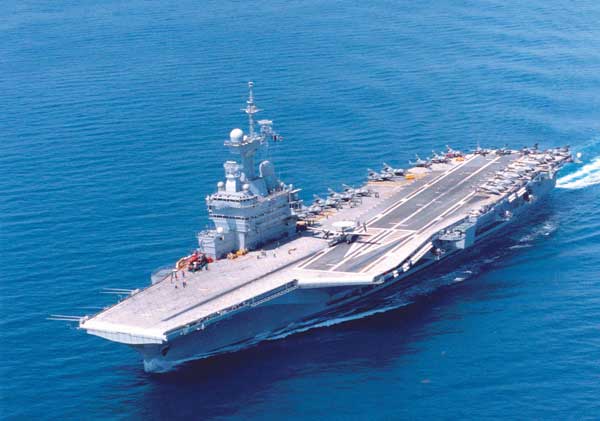The topic for today’s seminar, “China and the Indian Ocean Region” relates to an issue on which there is a dire need for India to focus her attention on very closely. Historically, we have defaulted by never devoting enough time and effort to study the cultures, motivations, aspirations or even the languages of our neighbours. There could be two possible causes for this. Either it is our native hubris which says that our culture being so superior; anything foreign is not worth learning about. Or it is sheer laziness; or a combination of both. Whatever the reason, it is a serious shortcoming which we must hasten to rectify; as in the case of China with a sense of urgency.
In 1949, China wanted to assert its control over Tibet, and sure enough, “liberated” the Tibetans from Buddhism and feudalism. In 1951, to avoid antagonising China, Nehru persuaded the Tibetans to accept Chinese suzerainty over their country.
Although Nehru based his vision of a resurgent Asia on friendship between two of its largest states, there was an inherent and historical conflict of interest in Tibet which was a geographical and political buffer zone where India had inherited special privileges. At the end of the Civil War in 1949, China wanted to assert its control over Tibet, and sure enough, “liberated” the Tibetans from Buddhism and feudalism. In 1951, to avoid antagonising China, Nehru persuaded the Tibetans to accept Chinese suzerainty over their country.
In 1954, India and China signed a pact that set forth the basis of their relationship in the form of “Panchshila” or the five great moral principles that guide the lives of all Buddhists. Although some thought that this was a display of naivete on Nehru’s part, he probably calculated that in the absence of the wherewithal to defend the Himalayan regions, India’s best guarantee of security was to placate if not appease the Communist giant to our north. This started the famous but surreal and short-lived “Hindi-Chini Bhai-Bhai” phase in Indo-Chinese relations.
Despite repeated assurances to the contrary from the Chinese leadership, they commenced a subtle campaign around the mid-1950s; first of cartographic aggression followed by border incursions and skirmishes, and then the startling claim that the actual border lay 100 miles south of the 1914 McMahon Line drawn by the British. In 1959, the Dalai Lama fled Tibet and along with thousands of Tibetan refugees sought asylum in India. Amidst bitter recriminations, China laid claim to 10,400 sq km of Indian territory and demanded “rectification” of the entire border.
On 20th Oct 1962, Chinese forces attacked India. Having pushed our unprepared, ill-equipped and poorly led forces nearly to the plains of Assam, and having occupied strategic points in Ladakh, they withdrew 20 miles behind this newly established line of control. Since then Indo-Chinese relations have rarely been free of tension, which has peaked frequently: with their nuclear test in 1964, with their repeated support to Pakistan, and with their training and arming of insurgent groups in our North-east.
 The first signs of a thaw came with Rajiv Gandhi’s visit in 1988, and there has been a slow but steady improvement in relations ever since then. Today, I would say that there are three distinct markers in our bilateral relationship of which we must take clear note. One, bilateral trade very close to the 20 billion dollars and heading for the 30 billion mark. Two, China’s sustained and substantive military assistance to Pakistan including nuclear weapons. And finally, (something that we tend to gloss over); her illegal occupation of Aksai Chin and outstanding claim to a hundred thousand sq km of our territory.
The first signs of a thaw came with Rajiv Gandhi’s visit in 1988, and there has been a slow but steady improvement in relations ever since then. Today, I would say that there are three distinct markers in our bilateral relationship of which we must take clear note. One, bilateral trade very close to the 20 billion dollars and heading for the 30 billion mark. Two, China’s sustained and substantive military assistance to Pakistan including nuclear weapons. And finally, (something that we tend to gloss over); her illegal occupation of Aksai Chin and outstanding claim to a hundred thousand sq km of our territory.
Against that background, let me revert once again to the arena of maritime history and the account of a curious similarity in our respective past history.
India, as this knowledgeable audience is well aware, has an ancient maritime connection. Artifacts found at the Indus Valley demonstrate the extensive use of the seas by Indian seafarers around 3000 BC. One of the most well-known voyages of this period was undertaken during the reign of Emperor Ashoka of the Maurya dynasty. In the 3rd century BC his daughter, Princess Sangamitra, sailed to Sri Lanka with a tooth of Lord Buddha concealed in her tresses to spread the message of Buddhism. The prowess at sea shown by the Mauryas was followed by the maritime forays of the Pallava and Chola dynasties which set up surrogate empires in South-east Asia.
In the past, we have harped upon and bemoaned our so-called ‘encirclement’ by China. But on our own part we have made very little effort to reach out, to befriend or lend substantive assistance to our maritime neighbours.
The breakdown of Chola power in the middle of the 13th century coincided with the establishment of the Turkish Sultanate in Delhi, and a few centuries later by the rise of the Mughal dynasty in India. Unfortunately, the Turks and the Mughals, with their Central Asian upbringing, had little recognition of the importance of the seas, and hence India’s ancient maritime tradition inevitably suffered.
The decline of India’s sea power by the 14th century was to a large extent responsible for the success of the European adventurers who began to arrive on our shores in the next century. In fact, till the arrival of the Portuguese at Calicut in 1498, no western naval power had appeared on Indian waters. The Portuguese were followed by the Dutch, the British and the French. They came in search of spices, but stayed on to rule this land. The importance of the sea was realised by Indian rulers only when it was too late.
Now let us turn to China. In their case, until the 8th century AD, Chinese sailors were restricted to plying on rivers and inland waterways. Sea-going ships and a maritime tradition developed only in the period between the 9th and 12th centuries when Chinese ships began trading between Japan and Korea. The 13th and 14th centuries saw the establishment of trade links with South-east Asia and India.
The famous seven voyages of the eunuch Chinese Admiral and explorer, Cheng Ho or Zheng He, to the Indian Ocean in the 15th century are the best known ancient examples of interaction between China and the Indian Ocean Region. During these seven voyages the Chinese fleet called at ports in South-east Asia, India, Sri Lanka, the Middle East and East Africa. They built warehouses to support their fleets, appointed ambassadors, dabbled in local politics and in general, established China as the dominant power in the known world. It needs to be remembered that at that juncture, the Chinese fleets were more advanced in design and seamen more skilled than those of any other maritime power in the world.
Yet, in a rather strange turn of events, the death of the Chinese Emperor Yonglo in 1421, followed in quick succession by the death of Zheng He while returning from a voyage to India, sounded the death knell of Chinese maritime power. Future emperors, (just like the Mughals), possessed by the ‘Middle Kingdom’ mentality, banned further naval expeditions and burnt all records of Zheng He’s expeditions. Inevitably, China’s maritime power withered away, and this, in turn, allowed European nations to dominate the seas, and led to the eventual colonisation of China.





